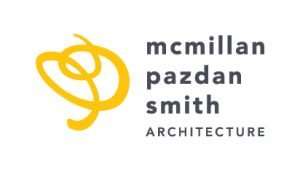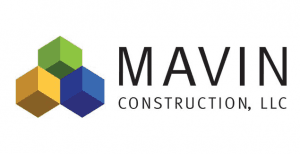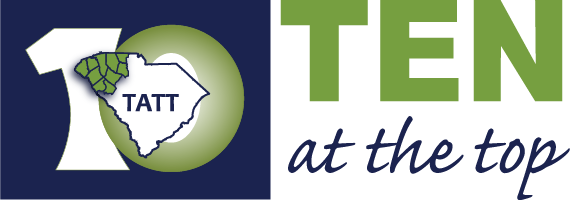
Sep 17, 2020 | Press releases, Staying on Top
Greenville, SC | September 15, 2020 – Ten at the Top [TATT] is excited to host the Celebrating Upstate Unsung Heroes Virtual Event at 11:30 am on November 18th, recognizing and honoring Unsung Heroes from across the 10-county Upstate region. Traditionally known as the annual Celebrating Successes Luncheon, this event typically recognizes businesses, organizations and individuals who help make the Upstate a leading place to live, learn, do business and raise a family. Given the circumstances surrounding the COVID-19 pandemic, the TATT Board of Directors felt that it was not only necessary to host this event virtually, but to take the opportunity to honor those who have remained committed to serving others throughout this pandemic.
Whether they are a community volunteer, employed in an essential business or someone within local neighborhoods who has gone the extra mile, Ten at the Top is encouraging members of the Upstate community to nominate individuals who have stood out during the pandemic due to their unselfish nature and willingness to help support the well-being of their community. In addition to their service as an Upstate Unsung Hero, the only requirement for nomination is that the nominee must live or serve their vital community function within one of the following ten counties: Abbeville, Anderson, Cherokee, Greenville, Greenwood, Laurens, Oconee, Pickens, Spartanburg or Union. Everyone nominated will receive recognition as an Upstate Unsung Hero, but a selection committee will choose one special Unsung Hero per county to be honored as part of the November 18th event.
All nominations can be submitted directly online at www.tenatthetop.org/nominate-an-unsung-hero/ and must be submitted by October 14th at 5:00pm.
“As an organization that focuses on bringing the Upstate together, we felt this event was important to honor the individuals, organizations and businesses who have worked tirelessly during the pandemic to keep our community healthy, safe, and strong,” said Dean Hybl, Executive Director of Ten at the Top. “With the number of unfortunate events that have transpired over the past few months, we wanted to take this opportunity to shed light upon and honor our unsung heroes that have kept the Upstate going, day in and day out.
“Though we will not be able to gather in-person as a region to celebrate our Unsung Heroes, we intend to make this virtual gathering a special event that you will not want to miss. We will be live streaming the event and there will be several ways that attendees can participate in the celebration.”
The virtual event is free, though advance registration is requested through Eventbrite and a special “event gift” will be sent to all who register by Wednesday, November 11th. In lieu of an admission charge, attendees are encouraged to make a donation to help Ten at the Top continue its mission across the Upstate and to help say “thank you” to the county Unsung Heroes. Contributions will be divided between Ten at the Top general organizational support, the TATT Ignition Fund for providing long-term impact across the Upstate, and a “thank you” stipend to the Unsung Heroes that will be honored at this event.
To learn more about Ten at the Top and their Celebrating Upstate Unsung Heroes Virtual Event, please visit www.tenatthetop.org

Sep 16, 2020 | Staying on Top, Sustainable Growth, UpstateVibe365
 Prior to the Global Pandemic, the construction industry in the Upstate was hitting on all cylinders with business strong in most sectors. Since the start of the pandemic, the construction industry is still going strong in some sectors, but there are others in which projects have slowed or stopped. We asked representatives from four local companies: Todd Horne from Clayton Construction, D.J. Doherty from Mavin Construction, Joe Pazdan from McMillan Pazdan Smith Architecture and Neal Workman of Trehel Corporation, to provide us with an insiders view on how things are looking as we move towards the final quarter of 2020.
Prior to the Global Pandemic, the construction industry in the Upstate was hitting on all cylinders with business strong in most sectors. Since the start of the pandemic, the construction industry is still going strong in some sectors, but there are others in which projects have slowed or stopped. We asked representatives from four local companies: Todd Horne from Clayton Construction, D.J. Doherty from Mavin Construction, Joe Pazdan from McMillan Pazdan Smith Architecture and Neal Workman of Trehel Corporation, to provide us with an insiders view on how things are looking as we move towards the final quarter of 2020.
Q: In what ways, if at all, have you seen your business impacted by the pandemic?
 A: Joe Pazdan: The pandemic has significantly impacted the way we work. I am accustomed to having my team close at hand, with impromptu conversations and quick charrettes or design reviews that took a few minutes without scheduling. Collaboration now has to be intentional and often scheduled so for me, I have had to learn to work differently.
A: Joe Pazdan: The pandemic has significantly impacted the way we work. I am accustomed to having my team close at hand, with impromptu conversations and quick charrettes or design reviews that took a few minutes without scheduling. Collaboration now has to be intentional and often scheduled so for me, I have had to learn to work differently.
More importantly, I miss our team and the culture we have built taking care of one another. I miss experiencing the daily joys and struggles of the individuals in our firm from being together in the office.
 Neal Workman: On a national level, we have witnessed investor and market insecurity, which trickles down and directly impacts local economics. At Trehel, we have experienced a disruption of decision-making, which has led to a “wait and see attitude” with projects being delayed and impacting new business procurement. The pandemic has created a heavy demand for our technology dependency and prompted us to continue expanding our capabilities.
Neal Workman: On a national level, we have witnessed investor and market insecurity, which trickles down and directly impacts local economics. At Trehel, we have experienced a disruption of decision-making, which has led to a “wait and see attitude” with projects being delayed and impacting new business procurement. The pandemic has created a heavy demand for our technology dependency and prompted us to continue expanding our capabilities.
There have been positive benefits as well; the unusual circumstances have allowed us to express care to our employees in new ways. We have adopted flex schedules, workflows, new processes, and the expanded use of communication tools, which otherwise may have been overlooked until they became a necessity.
Todd Horne: The biggest impact Clayton Construction has seen from the pandemic is our ability to congregate, converse, and work in what we knew as the traditional office environment. For all work, but especially in construction, an ability to meet with our clients and team members to review items from design coordination to product delivery is paramount. We have had to adapt from our traditional approaches and get creative with the implementation of technology to ensure we are operating as efficiently and cost effectively as possible.
Q: What unexpected impacts have you seen—good or bad—on the construction industry?
 A: D.J. Doherty: Safety on a jobsite is always a primary focus throughout any type of commercial project, with an emphasis of constantly looking out for others on the site. The Covid pandemic created a shift in some ways because any failure to follow guidelines put others at risk. This shift was a recognizable awkwardness at first but quickly transitioned into much more of a comradery and recognition that those we work alongside can have just as much impact on your health through their actions as you create with your own. Personal boundary lines became much more well defined and who was allowed within them was scrutinized more diligently. While this could have created added tension, it also provided an opportunity to instead strengthen the bonds with those in our inner circles. It encouraged a new emphasis on how the risks of personal choices/actions can convey to everyone around us. While it could have been divisive, we have instead seen Covid serve as a rallying cry for the safety of the whole team. The personal relationships between those working together daily have been strengthened and are flourishing with trust and accountability. The cultural health of the team is no longer described as an idealistic goal but embraced as an expectation and starting point for individuals to be part of that team and enjoy it’s culture, knowing how to contribute by enhancing and strengthening each personal relationship.
A: D.J. Doherty: Safety on a jobsite is always a primary focus throughout any type of commercial project, with an emphasis of constantly looking out for others on the site. The Covid pandemic created a shift in some ways because any failure to follow guidelines put others at risk. This shift was a recognizable awkwardness at first but quickly transitioned into much more of a comradery and recognition that those we work alongside can have just as much impact on your health through their actions as you create with your own. Personal boundary lines became much more well defined and who was allowed within them was scrutinized more diligently. While this could have created added tension, it also provided an opportunity to instead strengthen the bonds with those in our inner circles. It encouraged a new emphasis on how the risks of personal choices/actions can convey to everyone around us. While it could have been divisive, we have instead seen Covid serve as a rallying cry for the safety of the whole team. The personal relationships between those working together daily have been strengthened and are flourishing with trust and accountability. The cultural health of the team is no longer described as an idealistic goal but embraced as an expectation and starting point for individuals to be part of that team and enjoy it’s culture, knowing how to contribute by enhancing and strengthening each personal relationship.
 Todd Horne: Clayton Construction has seen several unexpected impacts due to the pandemic. Our team has remained vigilant in mitigating the outbreak. Specifically, we have developed a COVID-19 Exposure Prevention, Preparedness, and Response Plan that has been implemented throughout our company and jobsites.
Todd Horne: Clayton Construction has seen several unexpected impacts due to the pandemic. Our team has remained vigilant in mitigating the outbreak. Specifically, we have developed a COVID-19 Exposure Prevention, Preparedness, and Response Plan that has been implemented throughout our company and jobsites.
Another impact to our industry has been manufacturing plant shutdowns, material shortages and/or material delays resulting from the pandemic. All of this has made scheduling and coordination a challenge on projects where you are forecasting delivery/turnover sometimes 12 to 18 months in advance.
Although we have experienced some challenges, our region is still seeing a tremendous amount of growth and we are confident that the construction industry will continue to thrive in the Upstate.
Neal Workman: Since the industry was considered essential, projects have continued to progress at a somewhat normal pace without lengthy shutdowns. We have embraced online communication technologies, such as Zoom, that allow us to hold meetings virtually without exposure to the virus. While this has been effective, we have sacrificed the personal connection and collaboration, which historically has been vital to our business practices.
One of the most significant challenges has been managing the emotional “fear” of workers on our jobsites versus adapting to the pandemic’s real threat. In addition, we have experienced delays in deliveries and price increases, especially related to wood products due to manufacturing facilities either closed or operating with limited production capacity.
Q: In what ways is the building industry uniquely positioned to play a part in the economic recovery of the Upstate?
A: D.J. Doherty: The construction industry has enjoyed significant growth in the years leading up to the pandemic. To support this demand most companies expanded their capacity, improved internal processes and learned how to work smarter. The urgency of every project seemed to be ratcheted up , and delivery models for projects shifted with design build, partnering and CM@R arrangements becoming much more frequent. The Covid pandemic placed much of the industry in a place of uncertainty about what the future holds and some adjustment was required by many to adapt to less opportunities and in some occasions reduced urgency. The capacity and ability of the industry are still intact across the Upstate and Covid has provided just enough of a break that much of the industry completed the strategic initiatives for improved processes and better communication. These initiatives were longer term goals but were quickly achieved out of necessity to survive, and will serve the Upstate well with an improved ability to move an idea or need from concept to shovels in the ground in the most efficient way possible. The pandemic has hurt but also provided for better/stronger/wiser/faster processes that support recovery at record breaking pace.
Q: In what business sectors are you seeing the most activity? Are there any that surprise you? Please explain.
A: Joe Pazdan: Industrial has strengthened for the time being – eCommerce was already significant, but much more important now with so many working from home. Seeing distribution, warehousing and also manufacturing continue to invest.
Need for healthcare facilities still strong, but has had some fits and starts as they have been focused on fighting the virus and a downturn on revenue due to lack of surgeries. Seems to have settled and projects continue – it has been remarkable how our healthcare administrators and professionals have weathered through this storm.
Hospitality, retail and civic work is slower for us.
The loss in higher ed investments – a market that has been very stable, surprised us. We admire the college and university presidents, along with K12 superintendents who have had to manage through this effort and wonder how this will impact long term investments.
Seems to be a lot of institutional money on the sidelines and developers continuing to look for new opportunities.

Sep 15, 2020 | Community Vibrancy, Staying on Top, UpstateVibe365
A conversation with Tim Todd, executive director, Discover Upcountry Carolina Association

Tim Todd, Executive Director of Discover Upcountry Carolina Association
Early on during the pandemic, we had Tim Todd as a featured speaker on one of our TATT Chats, talking about the ways the tourism industry had been hobbled by COVID-19. Several months later, we wanted to check in to see how he sees things changing and whether things are looking up for tourism in the Upstate.
Q: Tourism was hit hard and quickly by the pandemic. What signs do you see that things are recovering?
A: While there is still a long way to go before we see things return to pre-pandemic levels, I am encouraged by several things that indicate that the industry is on its way back. In early April, the number of hotel room nights sold was down 68.9% from the previous year for the state. Six months later, in early September, the number of room nights sold was down 25.4% from the same period in 2019. Also, certain sectors of the tourism industry are doing very well during the pandemic. Outdoor activities such as boating, hiking, camping, exploring waterfalls, and fishing are especially seeing positive numbers. Lodging properties such as bed & breakfasts, cabins, campgrounds, and short-term rentals (Airbnb, VRBO, etc.) are also doing well.
Q: How are people doing things differently now as tourists—are they coming back to hotels, or making more use of vacation rentals like Airbnb, or doing more day trips?
A: Visitors have slowly begun to stay in hotels again, but as I stated previously, the vacation rental properties have been more popular due to their ability to allow guests to socially distance. Hotels are working very hard to implement new protocols and policies that ensure that their guests can be safe during their stay. Our attractions in the Upcountry are seeing a lot of visitors from the immediate area, so day trips have definitely been on the upswing during the past six months. But guests are also coming for overnight stays, particularly from within a 300-mile radius.
Q: How is the tourism industry responding with changes to make people feel safe?
A: It seems that many of the tourism industry businesses and organizations are “building the ship while they’re sailing it.” They are constantly implementing new safety and cleaning protocols, upgrading and adding technology systems that help them conduct business more safely and efficiently. Many lodging properties now have “touchless” check-in and check-out systems now, as an example. Hotel rooms are left vacant for a day before the next guest checks in to allow for increased cleaning and sanitizing. Attractions and recreation providers are operating with limited capacity so that proper social distancing can be done. In a lot of restaurants, menus are on the website or a QR Code can be scanned to download the menu.
Q: What kinds of changes in tourism do you think might end up being permanent changes? For example, do you see buffets making a comeback, or are they gone for good?
A: I’m not sure if buffets will completely vanish, but I think they will look drastically different than before. I think the biggest change that is here to stay will be additional technology that is being developed and implemented to allow for less human contact—things such as the example I mentioned earlier about lodging properties implementing “touchless” check-in. I believe ticketed attractions/activities will implement reservations only policies so that their facilities can properly manage capacity.

Art Galleries like at the Chapman Cultural Center are continuing to open exhibits, though most viewing is virtual.
Q: With the arts being such a huge part of tourism, and many arts venues struggling to survive, what can communities do to keep those destinations alive?
A: The arts community has obviously taken a huge hit due to the pandemic. According to an August survey by Americans for the Arts, the South Carolina arts community has lost an estimated $20 million in revenue since March. Several facilities and theaters have gotten creative and developed virtual and online programs. I have seen some organizations encourage their supporters to renew memberships and to continue annual giving pledges, even though performances might not occur for the next several months. I’ve also noticed that many organizations are encouraging their supporters and the public to purchase gift certificates to generate revenue. I am hopeful that the public, governmental agencies, foundations, and the business communities recognize the importance and impact of the arts organizations and will continue to support them in any way they can.

Sep 11, 2020 | Staying on Top
Welcome—Terence Roberts, TATT Chairman

Jim Shew, Vice President—Employee Benefits, Marsh & McLennan Agency
Guest Presentation—Jim Shew, Vice President—Employee Benefits, Marsh & McLennan Agency
Jim’s presentation covered how employee benefits may be impacted by COVID-19, which is important information as we head into benefits enrollment season. You can see his presentation here, and read an article with much of the same information here.
TATT Updates
Dean Hybl, TATT Executive Director
- Stay tuned for upcoming TATT Chat guest speakers!
- Networking time 20 minutes prior to the meeting on upcoming TATT Chats! Sign on early to network with friends and colleagues, and stay afterwards to chat for a few minutes as well.
County Updates
Abbeville (Charles Angel, Due West Robotics):
- STEM opportunities for youth including competitions grades K-12, not tied to a school
- Over 300 teams in SC, over 40,000 in the world
- National competition cancelled in April
- Numbers locally are holding steady and growing
- Virtual meetings and meet in person (with masks and social distancing)
- Lots of local support including printing and space to meet through Erskine College and the town of Due West community members and parents
- Known for our community support and often contacted by other members (New Zealand, etc.)
Cherokee (Terry Dennis, Meals on Wheels Cherokee County):
- On the front lines since beginning of pandemic when local senior center stopped dining service
- More volunteers than needed at first but has leveled off
- Received COVID funds
- Checking in on community members to ensure socialization
- Served on the census board and completed 75 census entries for seniors
- Nestle has donated frozen meals for our emergency programs
- Have expanded services such as providing microwaves, fans, pet food, frozen foods
- Over 70 referrals
Spartanburg (Troy Hanna, Spartanburg County Foundation):
- A year to the date from our groundbreaking ceremony certificate of occupancy obtained for Robert Hett Chapman III Center for Philanthropy (first in SC)
- Strategic planning will be focus for the next three years; non-profit effectiveness, grant-making and data driven solutions, and philanthropy in action
- Soft opening in October
- Possible virtual grand opening in beginning 2021
- Tech is a key focus
Union (Kathy Jo Lancaster, Union County Development Board):
- Increase in interest in sites and buildings; manufacturing sites/factory/warehouse, existing industry expansions as well as new locations including lots of global interest
- Workforce is going back to work, most companies are back in the workplace, most are at full capacity
- Several companies are adding in new product line (Milliken, Standard Textile (PPE), Camper Corporation (masks) and Vapor Apparel).
- Unemployment numbers are down now that BMW vendors and Standard Textiles are open
- No small business closures

Sep 9, 2020 | Staying on Top, UpstateVibe365
by Jim Shew, Vice President—Employee Benefits, Marsh & McLennan Agency

Jim Shew, Vice President—Employee Benefits, Marsh & McLennan Agency
COVID-19 has created unprecedented changes and challenges for employers, employees, and healthcare systems across the country and around the world. For employer health plans, there is a particular challenge to understand the financial impact of COVID-19. Will the virus lead to more sickness and increased costs? Reduced utilization and thus lower costs due to shutdowns? Increasing rates of morbidity due to less routine care? Information is rapidly changing, and it is impossible to know for certain what the future holds; however, experience through the pandemic thus far has revealed some relevant data that informs employer expectations.
First, utilization is increasing in some specific areas:
- Diagnostic laboratory costs are increasing due to federally mandated waiving of the cost of COVID-19 testing as well as all testing ordered by a physician. 2020 diagnostic laboratory utilization is therefore likely to continue to be high as testing continues. While COVID-19 tests are relatively inexpensive ($50-150), more of the population is being tested. On average, roughly 15% of covered members will receive a COVID-19 test.
- Telemedicine: Nationwide, just 10% of healthcare consumers had used telemedicine prior to the pandemic. With the outbreak of COVID-19, more services are covered by insurance (and Medicare) through telemedicine, and healthcare systems have expanded capacity for telemedicine. Many routine visits and non-urgent health concerns have already switched from in-person to phone and video visits, and this will likely continue.
- Mental health services utilization may increase as individuals cope with difficult social, economic, and health situations. In addition, some mental healthcare providers are also converting appointments from in-person to phone or video.
- Inpatient hospital utilization has increased as individuals are hospitalized due to COVID-19. The nationwide average cost per day for a hospital stay is $4,000 – $5,000 and the average cost per COVID-19 inpatient admission is $38,000.
Conversely, employers have observed clear utilization decreases in elective and non-emergent procedures as well as routine medical, dental and vision procedures.
With all of this as a backdrop, we are getting to the time of year for health insurance plan renewals for 2021, and planning for cost and utilization expectations in 2021 cannot be done in the traditional way. The past 5+ months of experience are probably not going to be predictive of what employer plans will experience in 2021. Employers will now need to gauge the following different factors:
- Pent-up demand: This may occur as infection rates decline. Individuals who deferred elective and non-emergent services may seek these services later in 2020 or 2021, in addition to those who are seeking care along usual time horizons.
- Demographic risk: Thus far, epidemiologic studies have consistently shown that older (60+) populations individuals with pre-existing conditions are at a higher risk of developing severe symptoms, complications, and potential death from COVID-19. Employers covering greater concentrations of older individuals and individuals with pre-existing conditions are at higher risk of increased health plan costs.
- Geographic risk: Employers with employees traveling to high risk, COVID-19 areas or to countries with large concentrations of COVID-19 cases face a higher risk of an increase in health plan costs.
- Industry risk: Employees working in certain industries where social distancing is not possible or where exposure to potentially COVID-19 infected individuals is a requisite part of the job also present potential cost implications. These industries include manufacturing, healthcare, retail, hospitality, and public safety sectors.
- Government risk mitigation efforts: The impact of social distancing and other local, regional, and national government risk mitigation strategies will affect the rate of the infection spreading throughout the U.S., and thus health plan costs.
Also in preparation for upcoming health plan renewals, it is essential that employers maintain an updated plan document in 2020 to reflect any plan design changes that were made in response to the COVID-19 pandemic. Some employers waived costs related to COVID-19 treatment or extended benefits to furloughed employees for some period of time. Documenting those changes, particularly for larger employers who self-fund their health plan and purchase stop-loss insurance for large claims, is especially important.
With COVID-19 continuing to evolve daily and with the continued development of potential vaccines, it is not possible to accurately predict the final impact this pandemic will have on employer health plans. But with that said, there are some actions employers can take to respond to the environment and risks they are in as they plan for their 2021 health plan offerings:
- Use a third party actuary to estimate the impact of COVID-19 on your health plan for 2021, and review those estimates as new information becomes available.
- Collaborate with your medical carrier or TPA to understand and evaluate any cost projections and/or premium rates
- Adjust your medical plan budget as appropriate, and IBNR reserve if needed
For self-funded employers purchasing stop-loss insurance…
- Review individual and aggregate stop-loss coverage provisions and renewal forecasts
- Communicate with the stop-loss carrier regarding mid-year changes to the plan document associated with COVID-19 treatment and testing to ensure no mid-year change to employer stop-loss attachment factors and/or premiums
- Confirm that the stop-loss carrier will not decline a stop loss reimbursement if employees are furloughed or allowed to take an extended leave due to COVID-19.
If you would like more information, you may want to also visit the COVID-19 Resource Page from Marsh & McLennan Agency.



 Prior to the Global Pandemic, the construction industry in the Upstate was hitting on all cylinders with business strong in most sectors. Since the start of the pandemic, the construction industry is still going strong in some sectors, but there are others in which projects have slowed or stopped. We asked representatives from four local companies: Todd Horne from Clayton Construction, D.J. Doherty from Mavin Construction, Joe Pazdan from McMillan Pazdan Smith Architecture and Neal Workman of Trehel Corporation, to provide us with an insiders view on how things are looking as we move towards the final quarter of 2020.
Prior to the Global Pandemic, the construction industry in the Upstate was hitting on all cylinders with business strong in most sectors. Since the start of the pandemic, the construction industry is still going strong in some sectors, but there are others in which projects have slowed or stopped. We asked representatives from four local companies: Todd Horne from Clayton Construction, D.J. Doherty from Mavin Construction, Joe Pazdan from McMillan Pazdan Smith Architecture and Neal Workman of Trehel Corporation, to provide us with an insiders view on how things are looking as we move towards the final quarter of 2020. A: Joe Pazdan: The pandemic has significantly impacted the way we work. I am accustomed to having my team close at hand, with impromptu conversations and quick charrettes or design reviews that took a few minutes without scheduling. Collaboration now has to be intentional and often scheduled so for me, I have had to learn to work differently.
A: Joe Pazdan: The pandemic has significantly impacted the way we work. I am accustomed to having my team close at hand, with impromptu conversations and quick charrettes or design reviews that took a few minutes without scheduling. Collaboration now has to be intentional and often scheduled so for me, I have had to learn to work differently. Neal Workman: On a national level, we have witnessed investor and market insecurity, which trickles down and directly impacts local economics. At Trehel, we have experienced a disruption of decision-making, which has led to a “wait and see attitude” with projects being delayed and impacting new business procurement. The pandemic has created a heavy demand for our technology dependency and prompted us to continue expanding our capabilities.
Neal Workman: On a national level, we have witnessed investor and market insecurity, which trickles down and directly impacts local economics. At Trehel, we have experienced a disruption of decision-making, which has led to a “wait and see attitude” with projects being delayed and impacting new business procurement. The pandemic has created a heavy demand for our technology dependency and prompted us to continue expanding our capabilities. A: D.J. Doherty: Safety on a jobsite is always a primary focus throughout any type of commercial project, with an emphasis of constantly looking out for others on the site. The Covid pandemic created a shift in some ways because any failure to follow guidelines put others at risk. This shift was a recognizable awkwardness at first but quickly transitioned into much more of a comradery and recognition that those we work alongside can have just as much impact on your health through their actions as you create with your own. Personal boundary lines became much more well defined and who was allowed within them was scrutinized more diligently. While this could have created added tension, it also provided an opportunity to instead strengthen the bonds with those in our inner circles. It encouraged a new emphasis on how the risks of personal choices/actions can convey to everyone around us. While it could have been divisive, we have instead seen Covid serve as a rallying cry for the safety of the whole team. The personal relationships between those working together daily have been strengthened and are flourishing with trust and accountability. The cultural health of the team is no longer described as an idealistic goal but embraced as an expectation and starting point for individuals to be part of that team and enjoy it’s culture, knowing how to contribute by enhancing and strengthening each personal relationship.
A: D.J. Doherty: Safety on a jobsite is always a primary focus throughout any type of commercial project, with an emphasis of constantly looking out for others on the site. The Covid pandemic created a shift in some ways because any failure to follow guidelines put others at risk. This shift was a recognizable awkwardness at first but quickly transitioned into much more of a comradery and recognition that those we work alongside can have just as much impact on your health through their actions as you create with your own. Personal boundary lines became much more well defined and who was allowed within them was scrutinized more diligently. While this could have created added tension, it also provided an opportunity to instead strengthen the bonds with those in our inner circles. It encouraged a new emphasis on how the risks of personal choices/actions can convey to everyone around us. While it could have been divisive, we have instead seen Covid serve as a rallying cry for the safety of the whole team. The personal relationships between those working together daily have been strengthened and are flourishing with trust and accountability. The cultural health of the team is no longer described as an idealistic goal but embraced as an expectation and starting point for individuals to be part of that team and enjoy it’s culture, knowing how to contribute by enhancing and strengthening each personal relationship. Todd Horne: Clayton Construction has seen several unexpected impacts due to the pandemic. Our team has remained vigilant in mitigating the outbreak. Specifically, we have developed a COVID-19 Exposure Prevention, Preparedness, and Response Plan that has been implemented throughout our company and jobsites.
Todd Horne: Clayton Construction has seen several unexpected impacts due to the pandemic. Our team has remained vigilant in mitigating the outbreak. Specifically, we have developed a COVID-19 Exposure Prevention, Preparedness, and Response Plan that has been implemented throughout our company and jobsites.



